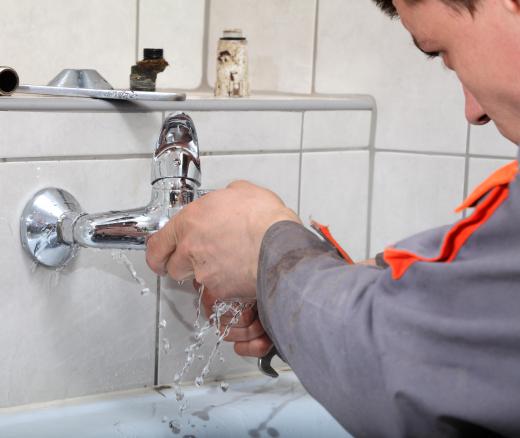A sink wrench is a tool that can be used to tighten or loosen fasteners that are difficult to reach. The name comes from the fact that plumbers can use them to install or remove water lines or other components underneath sinks, though they can be used in a wide variety of other applications. Sink wrenches typically consist of a long metal bar with a jaw on one end and some type of handle, or other method for gaining leverage, on the other. The jaw operates on a cam so that it will naturally clamp down when the wrench is turned. In many cases, a sink wrench will have a reversible jaw so that the same tool can be used to both loosen and tighten connections.
In many cases, it is difficult to reach the water lines and other connections underneath a sink. Typical sink installations involve cramped quarters that can make it hard for a plumber to physically reach a fastener, let alone operate a conventional pipe wrench. A sink wrench can allow the plumber to reach into the tight areas under sinks and elsewhere. These devices are available in a variety of lengths and sizes, as a wrench that is too long or too short would either not fit under the sink or fail to reach the fasteners.

Most sink wrenches share a same basic construction that consists of three components. The main body of these wrenches is typically made of a cylindrical metal bar. One end of the bar terminates in a cammed jaw that will typically have ridged teeth to assist in gripping a fastener. The cam allows the jaw to tighten when it is rotated around a fastener in either a clockwise or counterclockwise manner, depending on how it is oriented. This jaw may mount directly to the bar, or it can be connected to a joint that allows for some lateral movement when working the wrench into tight places.

The other end of the bar typically terminates in some method used to grip and rotate the sink wrench, such as a perpendicular t-bar. If the sink wrench makes use of a t-bar, it may be fixed in place or capable of sliding back and forth through the main shaft. Designs that allow for the t-bar to slide back and forth can offer extra leverage when breaking loose connections that are especially tight. This type of design can also make it easier to negotiate the tight conditions underneath a sink.
